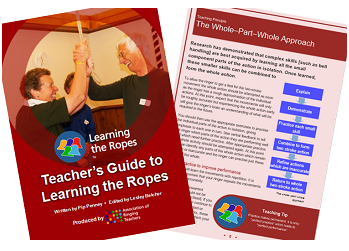Improving retention and extending performance
Participation to performance
The latest research shows that more people stay actively involved if the training follows a participants’ needs led model. This approach to training creates a larger pool of people who remain actively involved and from whom high-end performers and experts can emerge over an extended.
How much do we think about our ringers’ needs?
The ringers we teach will comprise of very many different types of people. Their ages will cover a wide year span, their backgrounds and life experiences will be different, the stage they have reached with their ringing will be wide ranging and their aspirations will vary.
Some of us will be teaching locally at towers where the standard of ringing is not very advanced whilst some of us will be teaching, or to use a more accurately descriptive word, coaching, at the top end bringing ringers on to ring complicated methods, to higher numbers of bells and to ring extended lengths, quarter peals and peals.
Stages of development
When people start to learn an activity there are various stages that have been identified as their skills develop:
- Novice
- Advanced Beginner
- Competent Performer
- Expert
How many of these stages do you have to adapt your coaching to cover in your own tower?
As we have already identified the aspirations of our various ringers will vary as will their rate of progress.The rate of progress will depend partly on the ringer’s natural ability and partly on how much ringing he or she participates in. It will also be affected by the quality of the coaching and the quality of the other ringers involved.
Once ringers have passed through the beginner stage some will immediately continue to develop and go on to become top end performers. This route is known as “early talent development”. These ringers need to be coached with a view to developing their performance and the role of the coach in these circumstances is “performance development coach”.
Other ringers will not develop so fast and may plateau; however, we still want to keep these ringers involved and participating in the local ringing. Our coaching approach to these ringers is very different to in the above example. These ringers need to be coached to sustain participation and the role of the coach in these circumstances is “participation coach”.
The Four Roles of a Coach
- Performance Development Coach
- Participation Coach
- High Performance Coach
- Children's Coach
Handling early talent
There is another route to high performance and becoming an expert. This
route is known as the “late talent development route”. It is this route
that helps to explain why it is so important to maintain participation.
Research has shown that early talent is not always a good predictor of eventual expert performance.
Whether the ringer makes progress through the early talent development route or the late talent development route at some point that ringer is going to need coaching for this high level of performance. The role of the coach in these circumstances is “high performance coach”.
Passing through all these stages of development will be children and as we know the needs of children are different from the needs of adults. Thus we have to take on yet another coaching role that of “children’s’ coach”.
Our teaching has to be able to adapt to coaching all these different ringers and aspects of their learning but obviously each of us cannot be expect to become expert coaches in all of the above areas.
Which area of coaching do you need to deliver to your ringers? Next time we will take a look at coping with all these different aspects of coaching ringing.

Teacher's Guide to Learning the Ropes
A book for any ringing teacher, covering the “how to” from the first bell handling lesson to teaching someone how to ring their first method.
The Teacher's Guide and its companion publication The Ringer's Guide to Learning the Ropes are both available from the ART shop.
Pip Penney